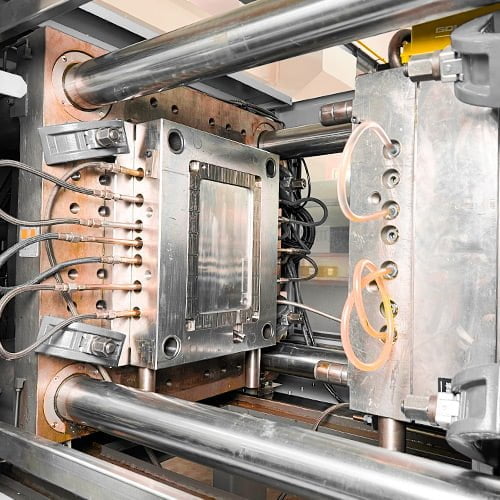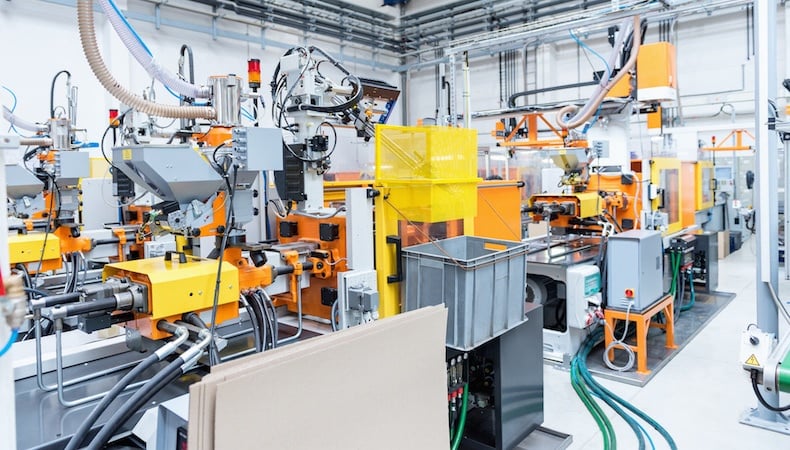Recognizing the Basics of Plastic Shot Molding Processes
Plastic shot molding offers as a cornerstone of modern-day manufacturing, supplying a methodical method to creating complex components with accuracy. This process not just includes the basic steps of melting and infusing products into molds yet also includes a nuanced understanding of different affecting factors, such as temperature and pressure. As sectors increasingly demand effectiveness and top quality, the complexities of this method come to be extra vital. Checking out these important aspects can reveal how even minor adjustments can cause significant improvements in production results, elevating inquiries concerning the possibility for advancement in this established procedure.
What Is Plastic Shot Molding?
Plastic injection molding is a commonly made use of manufacturing procedure that transforms thermosetting and thermoplastic materials into specific and complicated forms. This technique is preferred for its capability to generate high volumes of similar get rid of outstanding precision, making it a crucial method in numerous markets, consisting of auto, customer goods, and medical gadgets.
The procedure entails thawing the picked plastic material and infusing it into a mold and mildew under high pressure. The mold, developed to the specifications of the preferred component, permits the liquified plastic to form as it cools and solidifies. When the material has actually hardened, the mold is opened, and the finished part is expelled.
Plastic shot molding offers numerous advantages, including minimized waste, consistency in manufacturing, and the capability to integrate intricate styles that might be challenging with various other manufacturing approaches. Furthermore, it sustains a wide variety of products, each giving distinct properties that can be customized for details applications. As sectors remain to introduce, plastic shot molding stays at the forefront, allowing the development of innovative items that fulfill developing consumer needs.
The Shot Molding Process
The shot molding process is an advanced strategy that entails numerous key stages to create top quality plastic elements. Plastic pellets are fed into a heated barrel where they are melted right into a viscous fluid. This molten plastic is then injected under high stress into a precision-engineered mold, which shapes the product right into the preferred form.
As soon as the mold and mildew is loaded, the plastic is enabled to solidify and cool, taking the shape of the mold tooth cavity. Air conditioning time is essential, as it impacts the cycle time and the last properties of the shaped component. After sufficient cooling, the mold and mildew opens up, and the ended up element is ejected using ejector pins.

Products Utilized in Shot Molding
Numerous materials can be made use of in the injection molding process, each offering distinct properties that deal with specific applications. The most frequently made use of materials include thermoplastics, thermosetting plastics, and elastomers.

Thermosetting plastics, like epoxy and phenolic resins, undertake a chemical change during the curing procedure, causing a stiff, stringent structure. These materials are ideal for applications requiring high warm resistance and structural integrity, frequently utilized in vehicle components and electric insulators.
Elastomers, consisting of silicone and rubber-based materials, give versatility and strength. Their unique residential properties make them appropriate for applications that demand elasticity, such as gaskets and seals.
Additionally, specialized products like bio-based plastics and compounds are acquiring grip for their ecological benefits and boosted efficiency characteristics, broadening the extent of injection molding applications in various industries. Understanding the buildings of these materials is critical for selecting the proper check over here kind for specific tasks.
Advantages of Shot Molding
Injection molding stands apart as a very efficient manufacturing process that supplies countless advantages for producing complex components with accuracy. Among the most substantial advantages is the capability to produce detailed layouts that would be challenging or difficult to accomplish with various other techniques (Plastic Injection check Molding). The process permits detailed attributes and limited tolerances, making certain top notch parts
Furthermore, injection molding is understood for its fast production abilities, making it a suitable option for high-volume manufacturing. As soon as the mold is created, parts can be created swiftly, lowering preparations and increasing overall productivity. This effectiveness not just lowers production expenses but additionally gives an affordable edge on the market.
The flexibility of materials used in injection molding further enhances its appeal. A vast array of thermoplastics and thermosetting polymers can be utilized, enabling suppliers to pick products that best meet their specific needs, including strength, warm, and flexibility resistance.
Furthermore, the process reduces waste, as excess material can typically be reused and recycled. This sustainability aspect adds to a decreased ecological influence, making shot molding a responsible production option. In general, the benefits of injection molding make it a favored technique for lots of industries.
Aspects Affecting Item Quality
While various variables can affect item top quality in shot molding, recognizing these components is crucial for accomplishing ideal outcomes. Trick facets consist of material option, refining specifications, and mold and mildew design.
Material option plays a crucial role, as different polymers display special residential properties that affect flowability, toughness, and thermal security. Poor material selection can lead to defects such as warping or incomplete dental filling.
Processing parameters, consisting of cycle, temperature level, and pressure time, have to be diligently regulated. Variants in these settings can result in incongruities in component dimensions and surface coating. Excessively high temperature levels might create deterioration of the polymer, while poor stress can result in short shots.
Mold style is similarly important, as it figures out the flow of the molten plastic and the cooling process. Badly created molds might result in irregular cooling prices, resulting in dimensional inaccuracies and residual stresses.

Verdict
To conclude, plastic injection molding functions as an essential production procedure that enables the reliable manufacturing of top notch parts. Mastery of the injection molding process, including the understanding of products and the influence of various factors on item top quality, is essential for achieving optimal outcomes. The advantages of this technique, such as cost-effectiveness and layout flexibility, additional highlight its relevance across numerous industries, strengthening its condition as a preferred selection for high-volume manufacturing.
Plastic injection molding serves as a keystone of modern manufacturing, supplying a systematic technique to creating complicated components with accuracy.Plastic shot molding supplies a number of benefits, consisting of reduced waste, uniformity in manufacturing, and the capability to include complex designs that might be testing with various other producing methods (Plastic Injection Molding). As industries continue to introduce, plastic injection molding stays at the center, making it possible for the growth of sophisticated products that satisfy evolving customer demands
The shot molding process is an advanced method that includes a number of crucial stages to produce premium plastic parts.In verdict, plastic shot molding offers as a vital production procedure that enables the efficient manufacturing of top check that notch components.